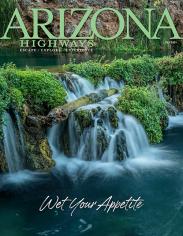Blue Range Loop
Apache-Sitgreaves National Forests, Alpine
"It’s not how you start; it’s how you finish.” That’s the mantra of gym teachers and campaign consultants everywhere, but it also can apply to scenic drives. Take the Blue Range Loop, a 49-mile jaunt that starts and ends in the idyllic White Mountains town of Alpine. The first leg of the loop is dotted with reminders of the worst wildfire in Arizona’s recorded history. But beyond that are pristine forest and riparian areas, plus expansive views of one of the most remote and unspoiled places in the Southwest.
